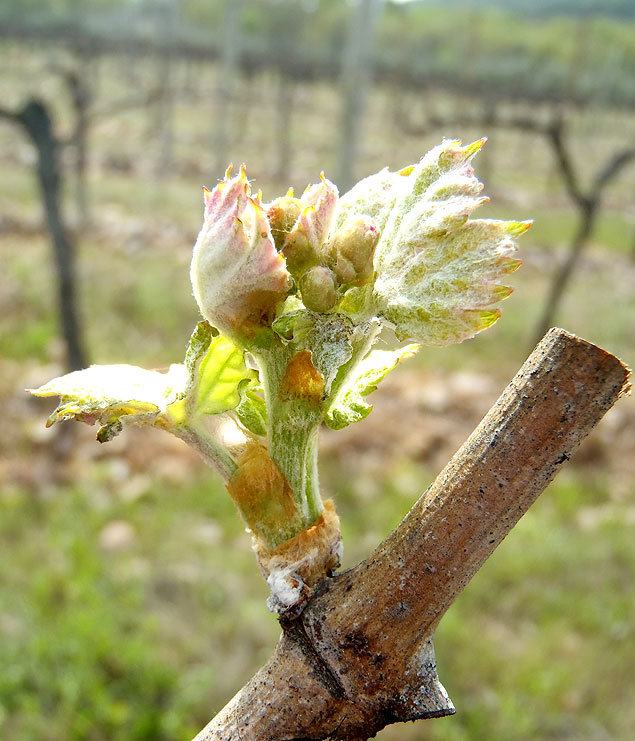In a few weeks those buds potentially harmful for the final quality of the fruit will be removed by hand

During the cold months of winter, the vine has remained lethargic and at rest. At the beginning of spring, when the temperatures rise, it starts to wake up. The sap —that liquid substance circulating inside the plant— is reactivated and the feeding process of the vine cells restarts. The air and the soil provide greater warmth, the time of sun exposure increases, the buds of the plant start to swell up and the first shoots grow. It is the initiation of a new annual cycle.
The start of the sprouting process varies depending on the climatic conditions. The hardness of the winter and the temperature factor are very influential. A soft winter will cause an early sprouting; and the more complex the winter weather has been, the later the shoots will grow.
At Dehesa del Carrizal, last winter was not too cold, it was very long though. Until just about the end of March, the temperatures —particularly at night— have been fairly low. This is a usual feature in our peculiar climate. Actually, in the last twenty years the sprouting dates have been very similar, and 2014 will be no exception. Besides the climate, the second most directly influential factor on the development of the buds is the variety. At our estate, Chardonnay is the first one to sprout. Then come Merlot and Petit Verdot, and a little later will start the Tempranillo and Syrah varieties. The last grape to initiate the process is Cabernet Sauvignon. An interval of up to two weeks can occur between the first and the last variety.
Since the end of March, the sprouting process is being prepared at the estate by removing the weeds and airing the land in order to reactive the soil and to favour the growth of new roots. In a few weeks, our vines will have developed all their buds; a very important process for the progress of the plan will take place then: the removal by hand of the excess buds and shoots. The ones growing on the wrong places —on the stem and arms of the grapevine, where bunches don’t usually appear but they will compete with the other shoots— will be removed. Those shoots which due to its location may lead to having leaves and bunches piled up are also eliminated, for they may damage the final quality of the fruit by causing less favourable light and air circulation conditions.
As usual, all the tasks which are carried out during these months have an only end: to create the necessary conditions to achieve the maximum quality of our grapes. All in all, there is no excellent wine without an excellent grape.
Introduce your email to receive our newsletter.



